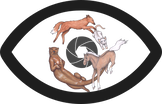I found Soundscapes & Behavioral Research and the CURE lab on a whim while registering for classes after a gap semester. Luckily through the CURE lab, I was able to participate in the analysis of data collected by Dr. Laura May-Collado and her collaborators. As someone who has primarily had experience in field work, I was excited to learn how data collected in the field was then analyzed. My research used recordings from autonomous underwater recorders located in Costa Rica, Panama and Mexico, to study the geographical variation and range of Pantropical Spotted Dolphin’s whistles. Using RAVEN, a software used for sound analysis, I identified and selected whistles with high signal-to-noise ratios. CURE has allowed me to independently work on data analysis while simultaneously working with Dr. May-Collado to interpret the results. Before this course I did not know what type of work was required to examine marine sound recordings. I had the opportunity to help deploy a hydrophone during my semester away and I now know what type of analysis occurs after sound files are retrieved from sound recording devices. Having the opportunity to work on a real research project has allowed me to understand more thoroughly what goes into data interpretation. The work was challenging but extremely rewarding. Throughout the process Dr. May-Collado was there to guide us especially during the transition of classes going online. This course has been one of my favorites during my undergraduate experience and provides experience and opportunity like no other class. If you have any interest in marine research, data analysis or wonder what working on a real research project is like, I highly recommend this class! I would like to thank Laura May-Collado for all of her help and guidance as well as giving me this opportunity in CURE. I am grateful to have had this experience and have learned so much throughout the process. I look forward to continuing my research into my last semester at UVM!
| Laura J May-Collado, Ph.D. |
|










 RSS Feed
RSS Feed
